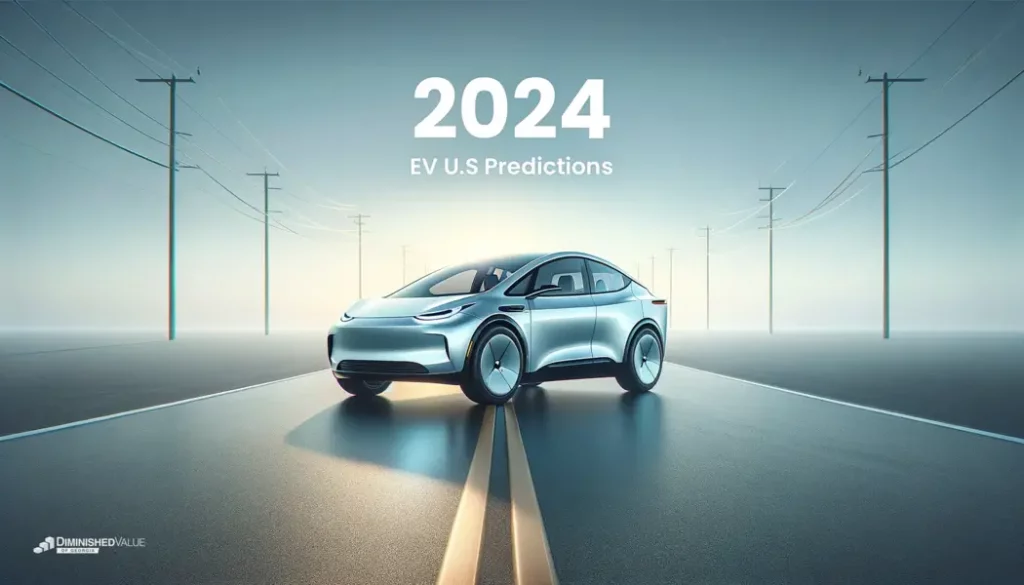A Fresh Start: Looking Back at 2023
Let’s start with a simple picture. Imagine sitting with a cup of coffee, reading about car sales in 2023. It was a big year for cars in Europe and the USA. In the EU, new car registrations went up by almost 14%. In the USA, car sales increased by over 12%, which means almost 2 million more cars were sold.

2024 EV US Predictions: What’s Next for Electric Cars? (PDF)
Electric Cars Take the Lead
One big news from 2023 was how electric vehicles (EVs) became more popular than diesel cars. They now rank third after petrol and hybrid cars. This shows a big change in what people want to buy.
In Europe, Italy, Spain, and France led the growth with big increases in car sales. Even Germany saw a good rise in sales. These numbers show a strong interest in better, cleaner cars.
The US Market: A Strong Comeback
The US car market also did well in 2023. Sales went up by 12.3%, covering both regular cars and bigger vehicles like trucks and SUVs. This growth is impressive, especially since the market was not doing well in 2022.
What to Expect in 2024 for EVs in the US
As we delve deeper into 2024, the trajectory of electric vehicle (EV) sales in the US poses an intriguing query: will the upward trend persist? To unravel this, let’s examine the key drivers and some often-overlooked factors that could shape the EV landscape.
In-Depth Look at Key Factors
- Enhanced Government Support: Tax incentives are just the tip of the iceberg. The government can play a pivotal role by investing in EV infrastructure, like increasing the number of public charging stations, which eases one of the biggest concerns for potential EV buyers – the fear of running out of charge. Additionally, government-led awareness campaigns about the benefits of EVs could further boost consumer interest.
- Advancements in EV Technology: Battery technology is rapidly evolving, leading to longer ranges and shorter charging times, making EVs more practical for everyday use. The development of solid-state batteries could be a game changer, offering even greater efficiency. The expansion of charging networks, not just in cities but also in rural areas, will make EVs a viable option for more people.
- Shifting Consumer Preferences: Environmental awareness is on the rise, and many consumers are now considering the carbon footprint of their vehicles. The growing social consciousness, coupled with the desire for the latest technology, positions EVs as not just eco-friendly choices but also trendy ones. Marketing EVs as tech-savvy, futuristic vehicles could attract a younger demographic.
- Economic Factors Influencing EV Adoption: The affordability of EVs is crucial. As EV technology becomes more mainstream, prices are expected to drop, making them competitive with traditional gasoline cars. Also, the overall economy plays a role – in a strong economy, consumers are more likely to invest in new technology.
Exploring Less Discussed Influences
- Impact of Urban Planning on EV Adoption: City planning that integrates EV needs can be a significant driver. This includes dedicated EV parking spaces, implementing EV-friendly zones in city centers, and incorporating EV charging into building regulations for new constructions. As cities become more EV-friendly, residents might be more inclined to switch.
- Insurance and Maintenance Dynamics: The total cost of owning an EV goes beyond the sticker price. Insurance companies offering lower premiums for EVs can be a strong incentive. Moreover, the lower maintenance requirements of EVs (fewer moving parts, less wear and tear) can be highlighted to potential buyers as a long-term cost-saving.
- The Emergence of a Robust Used EV Market: The availability of used EVs at lower price points can open the market to buyers who can’t afford new models. This secondary market also allows people to try EVs without a significant financial commitment, potentially leading to more EV converts.
Conclusion: Charging Ahead into an Electrified Future
The journey of EVs in the US through 2024 is not just about sales figures; it’s about a shift in societal norms, technological advancements, and economic considerations.
As we navigate this landscape, the question remains: How will these factors intertwine to shape the future of EVs in the US? Are we ready to embrace this change and accelerate towards a more sustainable, electrified future?






